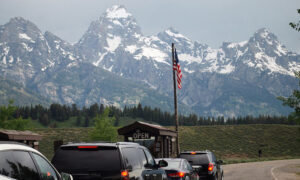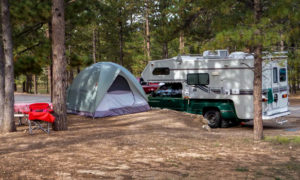
As the weather begins to warm up for most of the country, drivers begin thinking of spring and the services needed to maintain their vehicles. Unfortunately, it’s during this time of year, that automotive myths are often unintentionally perpetuated.
Knowing which stories are myths and which ones are fact can be difficult. Because of that, NAPA AutoCare’s 2009 Technician of the Year, Jack Gregory, is dispelling some common myths to keep everyone’s vehicle running smoothly in 2009.
Myth: Filling your cooling system with all water and no anti-freeze will save you money while not harming your vehicle.
Fact: The vehicle’s cooling system requires a mixture of half water, half anti-freeze. “Too much anti-freeze causes the vehicle to run on higher than optimal temperatures,” cautions Gregory. “Too much water can cause lower operating temperatures and possible freezing.”
Myth: Driving at 56 mph will give you the best fuel economy.
Fact: Although most vehicle manufacturers base their product’s gas mileage at 56 mph, driving at that speed doesn’t guarantee the best gas mileage. Keeping a consistent speed, whether it’s 25 mph or 65 mph, will ensure the best fuel economy.
Myth: Over inflating tires helps with gas mileage.
Fact: Over inflated tires cause wear in the middle of the tire. Under inflated tires causes wear on the outside of the tire. Drivers should inflate tires to the car maker’s recommended pressure to maintain maximum fuel economy and improve the life of the tires.
Myth: Driving closely behind an 18-wheeler will protect you from headwinds and allow your car to use less gas.
Fact: Driving closely behind an 18-wheeler doesn’t help with gas mileage, is dangerous and can be illegal. A sudden stop from the 18-wheeler could force a driver to slam on the brakes or even worse, cause an accident.
Myth: A vehicle can run a long way on empty.
Fact: Once a gas gauge reaches empty, about two gallons of gasoline remain in the vehicle’s tank. It’s always best to not test your vehicle’s limits, especially with colder weather affecting most of the country.
“Vehicle owners should talk with their regular automotive technician about information they’ve heard from others before acting on the info,” says Gregory. “A quick 10-minute stop at your regular service shop will make sure you’re acting on correct guidance.”
NAPA AutoCare Centers offer a preventive maintenance program that includes a complete inspection and regular monitoring of vehicle systems. Additionally, all qualifying services and repairs are covered by a 12-month / 12,000-mile “Peace of Mind” Warranty, good at more than 12,000 NAPA AutoCare Centers nationwide. You can learn more about these programs by contacting a local NAPA AutoCare Center or by visiting www.NAPAAutoCare.com
—————–
The RV Care & Maintenance DVD addresses issues like: information on the proper care and maintenance for the interior of your RV, the exterior of your RV, RV appliances, LP gas system, water system, electrical system, RV generators, RV batteryís, chassis & frame and RV tires. Let RV expert Mark Polk, help you to thoroughly understand how to take care of your RV. Watch as many times as you need to.
——————-






